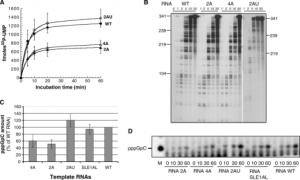Written by: Denton Vacuum, LLC
Summary: Learn why ion beams are favorable for certain applications.
Ion beam technology has been around for a long time. There are numerous advantages of utilizing ion beam sputter deposition techniques over physical or chemical deposition. Here is a breakdown of the advantages and practical uses that are still applied today.
Ion beams have the capability to coat applications with a wide range of specifications that surpass those of physical or chemical deposition. Their platforms showcase their interchangeability and flexibility by providing the user with either a simple rotation or multi-faceted flip fixture.
What is Ion Beam Sputtering?
Essentially, an ion source is generated to create a beam that targets an object. What the ion beam is consisted of is an anode and a cathode. With the application of a high amount of voltage, an electrostatic field is then created within the ion’s source pushing the ions towards the center. After a gas is injected – which is a crucial step in the process – the gas begins to ionize and the source creates plasma within. After, this process then shoots an ion in a form of beam directly at the target and sputters the material onto the sample. This process follows a similar pattern to e-beam evaporation but involves plasma instead of electrons.
Certain applications, such as biological applications, favor ion beam sputtering due to certain factors such as heat and thermal sensitivity. Excellent sources of coating can be still produced on heat sensitive samples due to the sputtering process’s enhanced capabilities. For example, a slice of cheese can be coated using an ion beam without any complications from the deposition process. An ebeam ray wouldn’t be able to match this type of quality produced.


